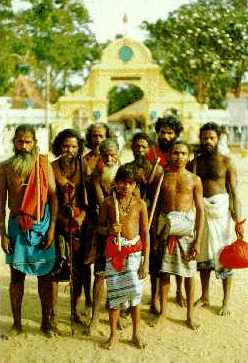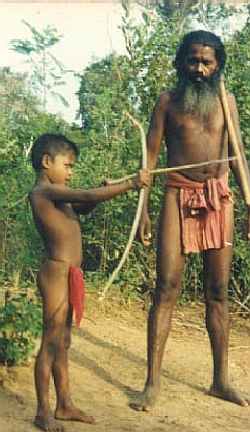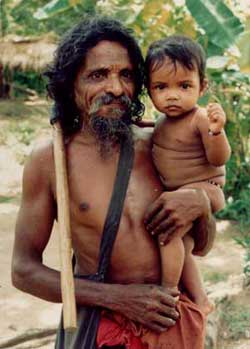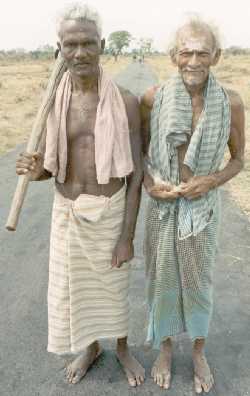
|
||||||||||||||
Early Man and the Rise of Civilisation in Sri Lanka:
|
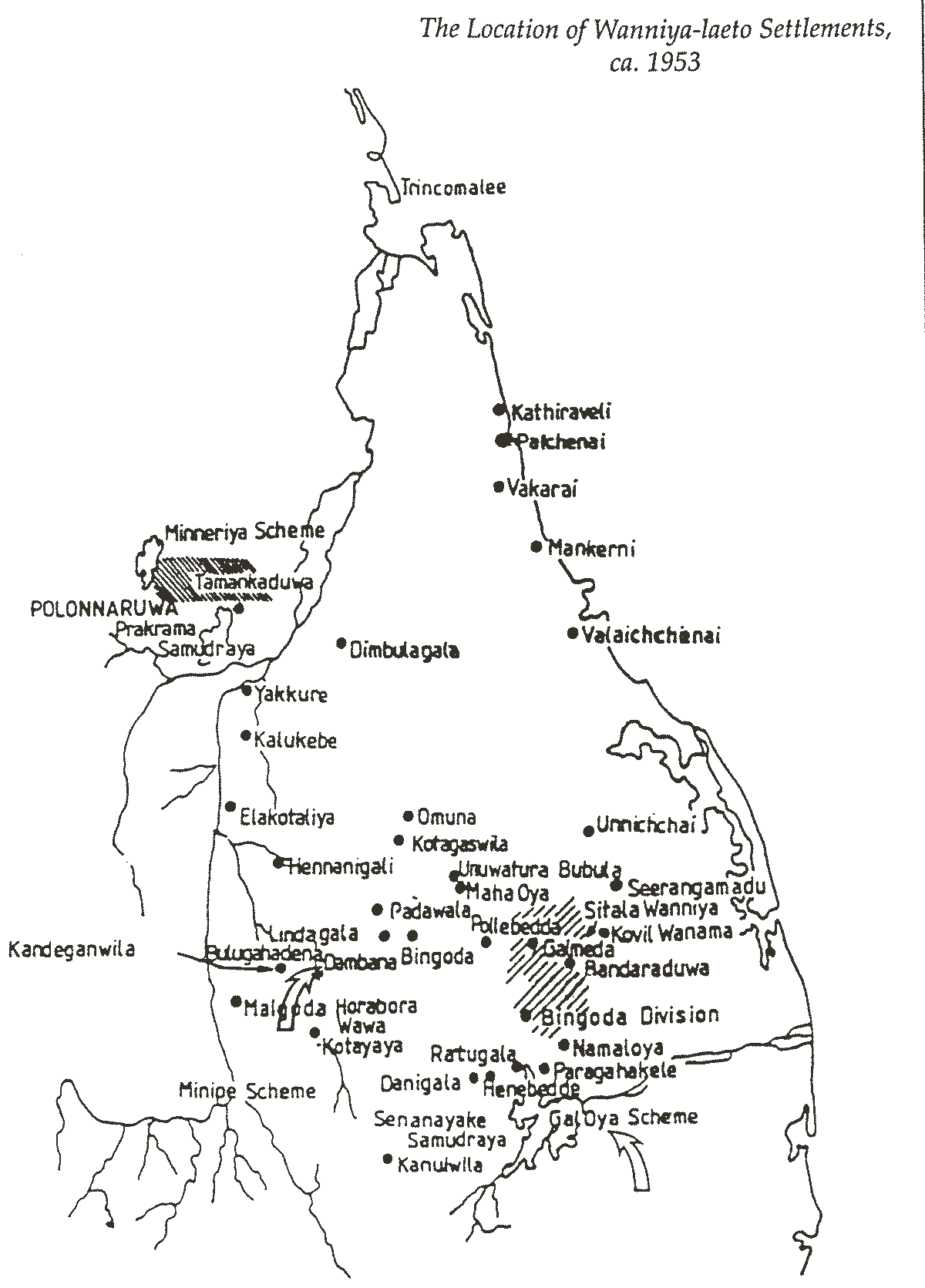
|
|
Traditional Wanniya-laeto hamlets in Sri Lanka. Map at quarter scale. Click on map to view at 100% scale.
|
The tool kit of Balangoda Man is distinguished by the occurrence of geometric microliths, comprising small (less than 4 cm long) flakes of quartz and (rarely) chert fashioned into stylised lunate, triangular and trapezoidal forms (ibid:266-70,688-94). Such geometric microliths have traditionally been considered the hallmark of the Mesolithic period as first defined in Europe. The earliest dates for the geometric microlithic tradition in Europe are around 12,000 BP. Hence it came as a surprise when such tools were found as early as 31,000 BP at Batadomba-lena, 28,000 BP at two coastal sites in Bundala and over 30,000 BP at Beli-lena. Sri Lanka has yielded evidence of this sophisticated technological phase over 19,000 years earlier than in Europe. However this apparent anomaly has been resolved by the discovery of geometric microliths in various parts of Africa, such as Zaire and southern Africa, from contexts in excess of 27,000 BP, thereby suggesting that Europe was late in manifesting this techno-tradition due to as yet undefined reasons.
Apart from stone tools, artefacts of bone and antler are quite prolific from 31,000 BP onwards, notably small bone points (ibid.:278-81). Beads of shell have also been discovered from these early contexts and the occurrence of marine shells at inland sites such as Batadomba-lena points to an extensive network of contacts between the coast and the hinterland. There is evidence from Beli-lena that salt had been brought in from the coast at a date in excess of 30,000 BP (ibid. 326).
Sri Lanka has yet to produce unequivocal evidence of Stone Age art. The cave art observed in various parts of the Dry Zone are the works of Vaddas, as demonstrated by ethnographers, although a certain proportion of it could conceivably be prehistoric (ibid.:465). Similarly there is little evidence of manifestations of ritual. There are, however, clear indications that the norm was for Balangoda Man to inter his dead irrespective of age or sex as secondary burials within his camp floors, having selected certain bones for this purpose. At Ravanalla cave and Fa Hien-lena red ochre had been ceremonially smeared on the bones. Both these practices have been matched by the mortuary customs of the Andaman Islanders, but not by those of the Vaddas. It is possible that the latter, through a process of cultural retrogression, ceased to practise the more elaborate mortuary customs of their ancestors (ibid.:465-7,696).
* * * * * The periodisation of Sri Lanka’s main technological episodes comprises the Middle Palaeolithic, Mesolithic, protohistoric Early Iron Age, Early Historic, Middle Historic, Late Historic and the Modern periods. What concerns the present section is the interface between the Mesolithic and Early Iron Age episodes.
The termination of the Mesolithic and the inception of the Early Iron Age in Sri Lanka has yet to be delineated with any clarity, due primarily to the lack of a single context with evidence of the transition between the two periods: none of the sites excavated so far has been able to present a chronological continuum from pre- to protohistory. In the case of caves the proto- and Early Historic strata have invariably been disturbed by guano diggers, whereas with open-air sites the selection of loci for settlement does not appear to have coincided (owing to different subsistence strategies) during the prehistoric and subsequent periods repectively.
|
|
Mahaweli Development Scheme resettlement areas. Maps at quarter scale. Click on maps to view at 100% scale.
|
|
|
Wanniya-laeto hamlets in Maduru Oya National Park.
|
There is palynological (pollen) evidence from the Horton Plains for herding (?Bos indicus) and the incipient management of barley and oats by >15,000 BC and by herding and the farming of barley and oats by 8,000 BC (Premathilake 2000). Then there is Doravak-lena shelter which is said to have yielded a geometric microlithic industry in association with what appears to be a cereal and a crude red pottery by 5,300 BC and Black and Red Ware (BRW) by 3,100 BC (Wiyeyapala in Deraniyagala ip:34, final report pends.). There is also Mantai where a geometric microlithic horizon dated to ca. 1,800 BC was found associated with a few pieces of slag, which could indicate the knowledge of copper-working as manifested in southern India by ca. 2,000 BC 5 . At all three sites, the indications are that settlements suggestive of herding/farming dominating the subsistence strategy are not in evidence. Assuming that the term ’protohistoric’ applies only when over half the nutrient intake is derived from food production (ie, herding/farming) these sites are being assigned to the prehistoric period. But they do represent the transition from prehistory to protohistory in Sri Lanka. It was of considerable duration, ca. 13,000 years, and constitutes a field of research into what is still uncharted terrain. It is probable that from at least as early as 14,000 BC up to ca. 1,000 BC, different subsistence strategies were being employed comtemporaneously, according to the ecological niche being exploited. These strategies could have ranged from one based 100 per cent on hunting and gathering to those with a certain degree of herding/farming with hunting and gathering being still predominant.
The new evidence from the Horton Plains is of the greatest significance (Premathilake 2000). Ghar-i-Mar and Aq Kupruk in Afghanistan and Mehrgarh in Pakistan are known to have had a Neolithic subsistence strategy by 7,000-6,000 BC. There is tentative evidence of herding in northern Rajasthan by 7,000 BC, of rice and pottery at Koldihwa, U.P. in India by 5,000 BC, and perhaps cereal management/farming in the Nilgiri Hills of South India by 8,000 BC (Gupta and Prasad 1985 cited in Premathilake 2000).
It was proposed but not established that Sri Lanka could have constituted yet another ‘hearth’ for the domestication of plants (Deraniyagala 1988; 1992:322,448). And so indeed it has proved to be, comparable to the incipient plant domestication of the Natufian in Syria, Lebanon and Israel (ca. 10,000-8,000 BC) and incipient herding at Zawi Chemi Shanidar and Shanidar in the Zagros and Kurdish hills of Iraq (ca. 9,000 BC). The search for Neolithic/Chalcolithic settlements in Sri Lanka needs to focus on finding faunal or plant domesticates, pottery, or evidence of copper-alloy working, in contexts predating the Early Iron Age. It is probable that these would be found in association with geometric microliths which would otherwise be assigned to the Mesolithic. If is noteworthy that the Neolithic/Chalcolithic stone artefacts in peninsular India display microlithic (Mesolithic) vis à vis blade (Neolithic/Chalcolithic) traits progressively as one moves southwards (ibid.:285-6,297; Allchin and Allchin 1974; 1974a).
EARLY IRON AGE
The protohistoric Early Iron Age appears to have established itself in South India by at least as early as 1,200 BC, if not earlier (Possehl 1990; Deraniyagala 1992:734). The earliest manifestation of this in Sri Lanka is radiocarbon dated to ca. 1000-800 BC at Anuradhapura and Aligala shelter in Sigiriya (Deraniyagala 1992:709-29; Karunaratne and Adikari 1994:58; Mogren 1994:39; the Anuradhapura dating is now corroborated by Coningham 1999). It is very likely that further investigations will push back the Sri Lankan lower boundary to match that of South India.
The settlement at Anuradhapura exceeded 10 hectares in extent by ca. 800 BC, and it was at least 50 ha by ca. 700-600 BC and thus already a ’town’ (Deraniyagala 1992:Addendum I; cf. Allchin 1989:3). So far no other settlements of the Early Iron Age have been located in Sri Lanka (with the exception of the very small-scale deposit within the rock-shelter at Aligala). Potential sites are Kandarodai, Matota (Mantai), Kelaniya and Tissamaharama; but the evidence has yet to surface (Deraniyagala 1992:730-2,735).
The ’Megalithic’ Early Iron Age mortuary complex of Sri Lanka (Seneviratne 1984) is akin to that of peninsular India. It falls primarily, within the protohistoric period, as indicated by its radiocarbon age of 750-400 BC at the only site to have been dated, Ibbankatuwa (v. Bandaranayake and Kilian in Deraniyagala 1992:734). The place of this mortuary trait within the overall Early Iron Age culture in Sri Lanka is as yet indeterminate. It is noteworthy that these cemeteries do not have contemporaneous settlements associated with them, for instance at Ibbankatuwa (Karunaratne 1994). In India this situation prevails at most localities (Deo 1985 cited in Kennedy 2000:356). Conversely, the Early Iron Age settlement at Anuradhapura does not have a Megalithic cemetery to which it can even remotely be linked. The Megalithic mortuary complex could possibly have been associated with just a special group of people, such as pastoralists, on the periphery of those who occupied Anuradhapura (cf. Leshnik 1974). What this signifies is that the Megalithic mortuary trait is but a discrete facet of the protohistoric Early Iron Age culture complex of India which had its distribution from the Gangetic valley down to Sri Lanka with regional variations. Hence it is misleading to refer to a Megalithic culture, as several scholars are apt to, since this mortuary trait is not necessarily a concomitant of the Early Iron Age of peninsular India or Sri Lanka.
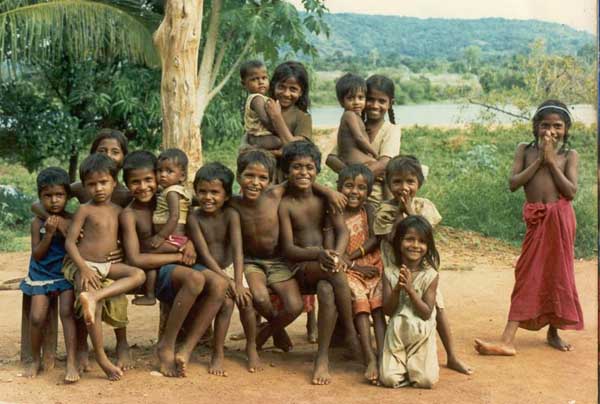
|
| Contrary to popular notions, Wanniyal-aetto people are bright, intelligent and happy when left to live according to their tradition ways. Wanniyal-aetto children of Hennanigala. Photo by 1992 Patrick Harrigan |
Similarly, the BRW ceramic tradition, which characterises much of the subcontinent’s Early Iron Age (except in the northwest) is not confined to the Megalithic mortuary facies in peninsular India, a point that is frequently overlooked. There is a tendency to equate BRW with the Megalithic complex on a one-to-one basis, thereby distorting the basis of interpretations from the outset. It is important, therefore, that the nature of this interrelationship between (a) the total Early Iron Age complex of the sub-continent, (b) its BRW ceramic complex and (c) the Megalithic cemetery complex in southern India and Sri Lanka be kept clearly in mind, so as to avoid confusion in interpreting the archaeological record (Deraniyagala 1992:734). The Sri Lankan data need to be interpreted against the backdrop of the total sub-continental Early Iron Age, since medium- to long-range cultural diffusion appears to have been prevalent.
The biological anthropology of Early Iron Age man in Sri Lanka is distinct from that of Balangoda Man, although the evidence from the only Megalithic site to have been assayed, Pomparippu, suggests a certain degree of miscegenation 6 . This could have occurred considerably prior to 500 BC (and after Bellan-bandi Palassa at ca. 4,500 BC) (Kennedy in Begley et al. 1981; Deraniyagala 1992:736; Hawkey 1998). What attracted these people who intruded on the scene at this early date? It is probable that the agricultural potential of Sri Lanka, notably its abundant supplies of water, with iron technology to subjugate the dense equatorial rainforest and heavy soils, was a major factor. Other attractions could have been the pearl banks in the northwest of the island (for Early Historic v. Mahroof 1992:110), the major copper ore source at Seruvila (Seneviratne 1994) and the island's location as an entrepôt for long-distance trade between Southeast Asia and West Asia 7 . Thereafter, Sri Lanka's attraction for settlers from further afield than South India appears to have gained rapidly. This swell coincided with the so-called Second Urbanisation of the Indo-Gangetic Plain (v. Allchin 1995). As mentioned earlier, Anuradhapura was at least 10 ha in extent by ca. 900 BC (perhaps much more). and by 700-500 BC it exceeded 50 ha. The phenomenon of the Indian Second Urbanisation would appear to have manifested itself unexpectedly early in Sri Lanka, either through rapid stimulus diffusion, or convergent evolution due to a stimulus from further afield such as long-distance trade, or (more likely) a combination of both.
TRANSITION TO THE HISTORICAL PERIOD
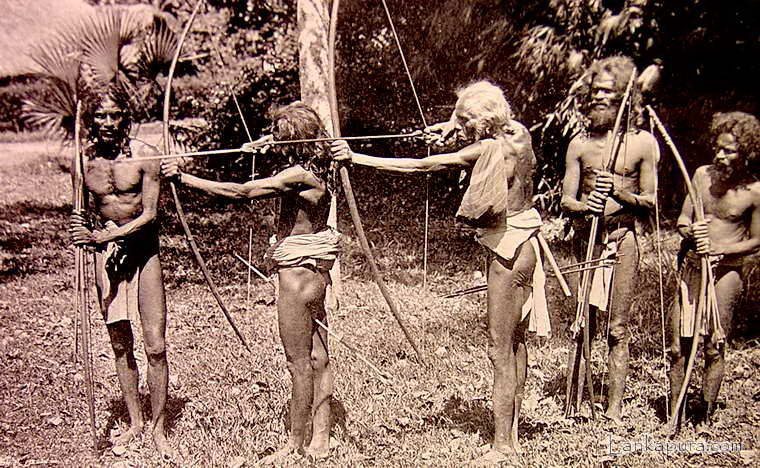 |
Veddahs with their primitive weapons in Ceylon (courtesy: www.lankapura.com |
The Early Iron Age of Sri Lanka, at ca. 1000-500 BC, is referred to as protohistoric since there is no evidence of writing in this period. At ca. 600-500 BC, the first appearance of writing (in Brahmi almost identical to the Asokan script some 200 years later) heralds the commencement of the Early Historic period (Deraniyagala 1992:739-5; Coningham 1999; Deraniyagala and Abeyratne ip). This writing, radiocarbon dated on charcoal from three locations in the Citadel of Anuradhapura and checked by thermoluminescence dating, is inscribed on potsherds signifying ownership. Among the names was Anuradh..., which, coincidentally or otherwise, is stated in the ancient chronicles to have been the name of a minister of prince Vijaya, the purported 'founder' leader of the Sinhalese, at ca. 500 BC. The new chronology for the beginnings of writing has thus revolutionised our concept of the lower boundary of the historical period of South Asia (for revised periodisation v. Deraniyagala 1992:714). It has pushed it back by at least two centuries ) into the times of the Buddha. Coeval with the first appearance of writing at Anuradhapura is the rise of new pottery forms (such as Early Historic BRW) and wares (eg, a medium-fine grey ware, possibly a North Indian import), red glass beads and what appear to be writing styli made of bone (Deraniyagala 1992:714)8 . One suspects a pan-India wave of cultural impulses that manifested itself in these material transformations. It is possible that some long-distance migrations, as evinced in the legend of Prince Vijaya’s arrival in Sri Lanka from North India, were concomitant to this phenomenon.
 |
Veddahs - the aborigines of Ceylon (courtesy: www.lankapura.com |
The earliest (600-500 BC) inscriptions on pottery at Anuradhapura, whenever adequately complete to be linguistically diagnostic, are in Indo-Aryan Prakrit. This situation is repeated in the earliest inscription found in Megalithic Kodumanal, and possibly in the lowermost levels of Arikamedu as well, in South India (ibid.:745-6; Casal 1949; Rajan 1990). So far, none of them are in Dravidian. If appears to corroborate the view that Indo-Aryan was pre-dominant from at least as early as 500 BC in Sri Lanka, as affirmed in the chronicles concerning an Aryan impulse associated with Vijaya. The views of Parpola (1984; 1988; v. Deraniyagala 1992:749-8) are relevant in this regard. They are bold and provocative, and they merit serious consideration. He postulates long-distance southward migrations of ruling Indo-Aryan elites at ca. 500 BC and argues his case well.
The prime mover for these impulses is difficult to isolate. The urban centres of the Ganges plains could well have constituted the nodes from which they went out, centrifugally, to be developed in the periphery and returned centripetally to these original nodes as a feedback phenomenon, thus creating a relatively closed interactive system. On the other hand, one cannot discount the possibility of inputs at the same time from West Asia, the Mediterranean and China. It is probable that this latter aspect has been greatly underestimated. The idea of devising the Brahmi script might have arisen through contact with Semitic trading scripts from West Asia (Deraniyagala 1992:744; note that long-distance trade could have existed during the protohistoric Early Iron Age extending into Southeast Asia and West Asia). Whatever the mechanism for the onset of urbanism in Sri Lanka, by 500 BC it was ready to accelerate into the Early Historic period.
In the time of Emperor Asoka in the third century BC, the city of Anuradhapura was nearly 100 ha in extent (ibid.:712-3), making it (on present estimates) the tenth largest city in India/Sri Lanka at that time and the largest south of Ujjain in northern India (Allchin 1989:3,12). Buddhism had by then taken root as the formal belief system of the island, coinage introduced and technologically the concept of irrigated agriculture, probably introduced during the Early Iron Age, developed into sophisticated and large-scale systems which served as the economic foundation of the correspondingly complex settlement configurations of the Early Historic period.
Early Man and the Rise of Civilisation in Sri Lanka: the Archaeological Evidence| Abstract
S. U. Deraniyagala
Director-General of Archaeology, Sri Lanka
| Living Heritage Trust ©2024 All Rights Reserved |
